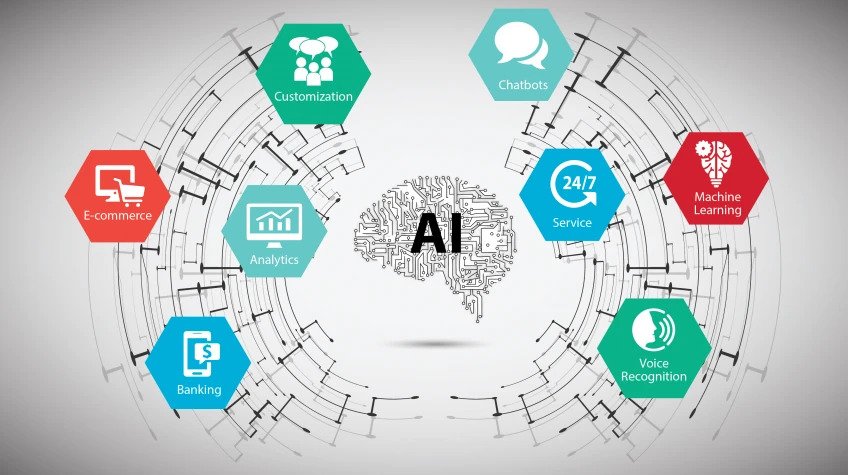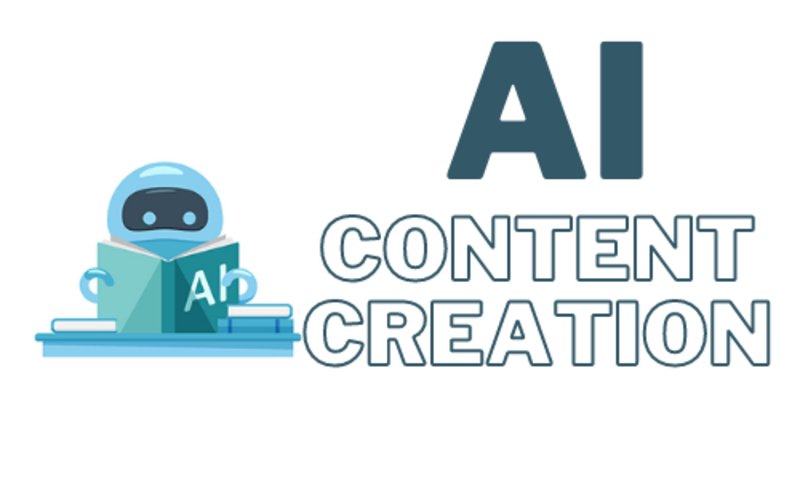This Article has been revised, edited and added to, by Poulomi Chakraborty.
- Why Analytics Matter in Content Strategy
- Comparing Traditional vs. Data-Driven Content Strategies
- Building a Data-Driven Content Strategy
- Tools and Techniques for Data-Driven Content Strategy
- Best Practices for Data-Driven Content Strategy
- The Future of Data-Driven Content Strategy
- Overcoming Common Challenges in Data-Driven Content Strategy
- Real-World Examples of Data-Driven Content Strategies
- Future Trends in Data-Driven Content Strategy
- Integrating Data-Driven Content Strategy with Other Marketing Efforts
- Leveraging Advanced Analytics for Deeper Insights
- Conclusion
In today’s digital age, having a robust content strategy is crucial for any business aiming to establish a strong online presence. However, creating content without understanding its performance is like shooting in the dark. This is where analytics come into play. By leveraging data, you can refine your content strategy to ensure it meets your audience’s needs and drives desired outcomes.
Analytics help you understand what content resonates with your audience, which topics are trending, and how your content is performing across different channels. This data-driven approach allows you to make informed decisions, optimizing your content for better engagement, higher conversion rates, and ultimately, greater success.
Why Analytics Matter in Content Strategy

Understanding the importance of analytics in content strategy is the first step towards creating a data-driven approach. Analytics provide insights into various aspects of your content, including audience behavior, content performance, and overall impact. By analyzing this data, you can identify what works and what doesn’t, allowing you to make adjustments and improve your strategy.
Audience Behavior
One of the most valuable insights analytics offer is a deep understanding of your audience’s behavior. This includes data on who your audience is, what they are interested in, and how they interact with your content. By analyzing metrics such as page views, time on page, bounce rate, and user demographics, you can get a clear picture of your audience’s preferences and behaviors.
For instance, if you notice that a particular type of content consistently receives high engagement, it indicates that your audience finds it valuable. On the other hand, if certain content has a high bounce rate, it may suggest that it’s not meeting your audience’s expectations, prompting a need for revision.
Content Performance
Analytics also provide insights into how well your content is performing. This includes data on metrics such as click-through rates (CTR), conversion rates, and social shares. By analyzing these metrics, you can determine which content pieces are driving the most engagement and conversions, and which ones are falling short.
For example, if a blog post has a high CTR but low conversion rate, it may indicate that while the content is attracting clicks, it’s not compelling enough to drive action. This insight can help you tweak your content to make it more persuasive and action-oriented.
Overall Impact
Beyond individual metrics, analytics can help you understand the overall impact of your content strategy. This includes measuring the return on investment (ROI) of your content efforts, assessing brand awareness, and evaluating customer loyalty. By tracking these metrics, you can gauge the effectiveness of your content strategy and make necessary adjustments to enhance its impact.
Comparing Traditional vs. Data-Driven Content Strategies
To truly appreciate the role of analytics in refining your content strategy, it’s helpful to compare traditional content strategies with data-driven approaches.
Traditional Content Strategy
In a traditional content strategy, content creation is often based on intuition, experience, or industry trends. While this approach can yield some success, it lacks the precision and adaptability that data-driven strategies offer. Traditional strategies may involve brainstorming sessions to generate ideas, followed by creating and distributing content without a clear understanding of its potential impact.
This approach can lead to several challenges, including:
- Inconsistent Results: Without data to guide content creation, results can be hit or miss. Some content pieces may perform well, while others may not resonate with the audience.
- Inefficiency: Traditional strategies often involve trial and error, which can be time-consuming and resource-intensive.
- Limited Audience Insights: Relying on intuition or anecdotal evidence provides limited insights into audience preferences and behaviors, making it difficult to tailor content to their needs.
Data-Driven Content Strategy
In contrast, a data-driven content strategy leverages analytics to inform every aspect of content creation, distribution, and optimization. This approach involves collecting and analyzing data to gain insights into audience behavior, content performance, and overall impact. By using this data to guide decision-making, businesses can create more targeted, effective, and engaging content.
The benefits of a data-driven content strategy include:
- Enhanced Precision: By using data to understand what resonates with your audience, you can create content that is more likely to succeed.
- Increased Efficiency: Data-driven strategies streamline the content creation process, reducing the need for trial and error.
- Deeper Audience Insights: Analytics provide a wealth of information about your audience, allowing you to tailor content to their preferences and needs.
- Measurable Results: Data-driven strategies enable you to track the performance of your content and measure its impact, making it easier to demonstrate ROI and make informed adjustments.
Building a Data-Driven Content Strategy
Shifting from a traditional content strategy to a data-driven approach requires a fundamental change in how you create, distribute, and analyze content. It’s about making informed decisions based on data rather than intuition, and continuously refining your strategy to achieve better results.
Setting Clear Objectives
The first step in building a data-driven content strategy is to set clear objectives. What do you want to achieve with your content? Your goals could include increasing website traffic, improving engagement, generating leads, or boosting conversions. By defining your objectives, you create a roadmap for your content strategy and establish benchmarks for measuring success.
Identifying Key Metrics
Once you have set your objectives, the next step is to identify the key metrics that will help you measure your progress. These metrics should align with your goals and provide actionable insights. For example, if your goal is to increase website traffic, you might focus on metrics such as page views, unique visitors, and traffic sources. If your goal is to boost conversions, you might look at conversion rates, click-through rates, and lead generation forms.
Collecting Data
To build a data-driven content strategy, you need to collect data from various sources. This includes using tools like Google Analytics to track website performance, social media analytics to monitor engagement, and customer feedback to understand user preferences. By gathering data from multiple channels, you get a comprehensive view of how your content is performing and how your audience is interacting with it.
Analyzing Data
Collecting data is just the beginning; the real value lies in analyzing it. Data analysis involves examining the collected data to identify patterns, trends, and insights. This can be done through various methods, such as statistical analysis, data visualization, and machine learning algorithms. By analyzing your data, you can uncover hidden opportunities, pinpoint areas for improvement, and make informed decisions to optimize your content strategy.
Creating Data-Driven Content
With insights from your data analysis, you can start creating content that is tailored to your audience’s needs and preferences. This involves using data to inform your content topics, formats, and distribution channels. For example, if your data shows that your audience prefers video content over blog posts, you might prioritize creating more videos. If your analysis reveals that certain topics generate higher engagement, you can focus on producing more content around those themes.
Distributing Content
A key aspect of a data-driven content strategy is understanding where and how to distribute your content for maximum impact. This involves analyzing data on your audience’s preferred channels, times of engagement, and content consumption habits. By leveraging this data, you can ensure that your content reaches the right audience at the right time. For instance, if your data indicates that your audience is most active on social media in the evenings, you can schedule your posts accordingly.
Measuring and Refining
The final step in a data-driven content strategy is to continuously measure and refine your approach. This involves tracking the performance of your content against your defined metrics and objectives, and making adjustments based on the results. By regularly reviewing your data, you can identify what’s working and what’s not, and refine your strategy to improve outcomes. This iterative process ensures that your content strategy remains relevant, effective, and aligned with your goals.
Tools and Techniques for Data-Driven Content Strategy

To effectively implement a data-driven content strategy, you need the right tools and techniques. These tools help you collect, analyze, and act on data, enabling you to make informed decisions and optimize your content strategy.
Google Analytics
Google Analytics is one of the most powerful tools for tracking and analyzing website performance. It provides a wealth of data on metrics such as page views, bounce rates, traffic sources, and user demographics. By leveraging Google Analytics, you can gain insights into how your audience is interacting with your content and identify areas for improvement.
Social Media Analytics
Social media platforms offer their own analytics tools, such as Facebook Insights, Twitter Analytics, and Instagram Insights. These tools provide data on metrics like engagement rates, follower growth, and post performance. By analyzing this data, you can understand which types of content resonate with your audience on social media and adjust your strategy accordingly.
SEO Tools
Search engine optimization (SEO) tools like SEMrush, Ahrefs, and Moz help you analyze your website’s search performance and identify opportunities for improvement. These tools provide data on keyword rankings, backlink profiles, and competitor analysis. By using SEO tools, you can optimize your content for search engines, improve your rankings, and drive more organic traffic to your site.
Content Management Systems (CMS)
Content management systems like WordPress, HubSpot, and Drupal offer built-in analytics and reporting features. These tools help you track content performance, manage your editorial calendar, and streamline your content creation process. By using a CMS with robust analytics capabilities, you can gain insights into how your content is performing and make data-driven decisions to enhance your strategy.
Heatmaps and User Behavior Tools
Heatmaps and user behavior tools like Hotjar and Crazy Egg provide visual representations of how users interact with your website. These tools show you where users click, scroll, and spend the most time on your pages. By analyzing heatmaps, you can identify user behavior patterns, optimize your website layout, and improve user experience.
A/B Testing
A/B testing is a technique used to compare two versions of a webpage or piece of content to determine which one performs better. By conducting A/B tests, you can experiment with different headlines, images, call-to-actions, and other elements to see what resonates best with your audience. This data-driven approach allows you to make informed decisions and continuously optimize your content for better results.
Customer Feedback and Surveys
Collecting feedback from your audience through surveys, polls, and feedback forms provides valuable insights into their preferences, needs, and pain points. By analyzing this feedback, you can tailor your content to better meet your audience’s expectations and improve overall satisfaction.
Best Practices for Data-Driven Content Strategy

To maximize the benefits of a data-driven content strategy, it’s essential to follow best practices. These practices ensure you effectively collect, analyze, and act on data to refine your content strategy.
Aligning Content with Business Goals
Ensure your content strategy aligns with your overall business goals. Whether you aim to increase brand awareness, drive sales, or improve customer retention, your content should support these objectives. By aligning your content with business goals, you create a cohesive strategy that drives meaningful outcomes.
Utilizing the Right Tools
Invest in the right tools to collect and analyze data. This includes web analytics tools, social media analytics, SEO tools, and customer feedback platforms. The right tools provide the insights you need to make informed decisions and optimize your content strategy.
Focusing on Quality over Quantity
Prioritize quality over quantity when creating content. While producing more content can increase visibility, it’s essential to ensure each piece is valuable and relevant to your audience. High-quality content is more likely to engage your audience, drive conversions, and achieve long-term success.
Continuously Monitoring Performance
Regularly monitor your content performance to identify what’s working and what’s not. Use analytics to track key metrics and gain insights into your content’s impact. By continuously monitoring performance, you can make data-driven adjustments to improve your strategy.
Embracing Flexibility and Adaptability
Be flexible and adaptable in your approach. The digital landscape is constantly evolving, and what works today may not work tomorrow. Stay open to experimenting with new content formats, distribution channels, and strategies based on your data insights. Embracing flexibility ensures your content strategy remains relevant and effective.
Engaging with Your Audience
Engage with your audience to understand their preferences and needs. Use social media, surveys, and feedback forms to gather insights directly from your audience. By actively engaging with your audience, you can create content that resonates and drives engagement.
Collaborating Across Teams
Collaborate with different teams within your organization to enhance your content strategy. Work with marketing, sales, and customer service teams to gather insights and align your content with overall business objectives. Collaboration fosters a holistic approach to content strategy, ensuring all efforts are coordinated and effective.
The Future of Data-Driven Content Strategy
As technology continues to advance, the future of data-driven content strategy looks promising. Emerging trends and technologies are set to further enhance how businesses create, distribute, and optimize content.
Artificial Intelligence and Machine Learning
Artificial intelligence (AI) and machine learning are revolutionizing content strategy. These technologies can analyze vast amounts of data to uncover patterns, predict trends, and provide actionable insights. AI-powered tools can automate content creation, personalization, and distribution, making content strategies more efficient and effective.
Predictive Analytics
Predictive analytics uses historical data to forecast future trends and behaviors. By leveraging predictive analytics, businesses can anticipate audience needs, identify emerging trends, and stay ahead of the competition. This proactive approach enables more strategic content planning and execution.
Enhanced Personalization
Personalization is becoming increasingly important in content strategy. Advanced data analytics and AI allow for deeper personalization, tailoring content to individual preferences and behaviors. Enhanced personalization improves user experience, increases engagement, and drives conversions.
Real-Time Analytics
Real-time analytics provide immediate insights into content performance. With real-time data, businesses can quickly identify trends, respond to changes, and make timely adjustments to their strategy. This agility ensures content remains relevant and effective in a fast-paced digital landscape.
Integrating Multiple Data Sources
Integrating data from multiple sources provides a comprehensive view of content performance. Businesses are increasingly using data from web analytics, social media, CRM systems, and customer feedback to inform their content strategy. This integrated approach offers deeper insights and more informed decision-making.

Overcoming Common Challenges in Data-Driven Content Strategy
While a data-driven content strategy offers numerous benefits, it also comes with its own set of challenges. Understanding and addressing these challenges is crucial for successfully implementing and sustaining a data-driven approach.
Data Overload
One of the most common challenges is dealing with data overload. With so much data available, it can be overwhelming to sift through and identify what’s most relevant. To overcome this, it’s important to focus on the key metrics that align with your business goals. Use filters and segmentation to narrow down the data, and leverage visualization tools to make sense of complex data sets.
Ensuring Data Quality
The quality of your data directly impacts the effectiveness of your content strategy. Inaccurate or incomplete data can lead to misguided decisions. To ensure data quality, regularly audit your data sources and processes. Implement data validation checks and use reliable tools and platforms to collect and analyze data.
Integrating Data from Multiple Sources
Combining data from various sources can be challenging due to differences in formats, metrics, and terminologies. To address this, establish a standardized framework for data integration. Use data integration tools and platforms that can aggregate data from multiple sources and provide a unified view of your content performance.
Interpreting Data Insights
Even with high-quality data, interpreting insights correctly can be challenging. Misinterpretation of data can lead to incorrect conclusions and ineffective strategies. To overcome this, invest in training for your team to enhance their data literacy skills. Use visualization tools to present data in an understandable format, and consider working with data analysts or specialists to accurately interpret insights.
Keeping Up with Changing Trends
The digital landscape is constantly evolving, and staying updated with the latest trends can be challenging. Regularly monitor industry reports, attend webinars, and participate in professional networks to stay informed. Use predictive analytics to anticipate future trends and adjust your strategy proactively.
Balancing Data and Creativity
While data is essential for informing your content strategy, creativity remains a critical component. Striking the right balance between data-driven decisions and creative content creation is key. Use data to guide your content themes and formats, but allow room for creative exploration and innovation. Encourage your team to experiment with new ideas and formats, using data as a foundation rather than a constraint.
Ensuring Privacy and Compliance
With increasing concerns around data privacy and compliance, it’s important to handle data responsibly. Ensure that your data collection and analysis practices comply with relevant regulations such as GDPR and CCPA. Implement robust data security measures to protect user information, and be transparent with your audience about how their data is used.
Real-World Examples of Data-Driven Content Strategies
Example 1: Netflix
Netflix is a prime example of a company that successfully uses data to inform its content strategy. By analyzing viewer data, Netflix gains insights into audience preferences, viewing habits, and popular genres. This data-driven approach allows Netflix to create and recommend content that resonates with its audience, resulting in high engagement and subscriber growth. For instance, the success of original series like “Stranger Things” and “The Witcher” can be attributed to Netflix’s ability to leverage data to understand what its audience wants.
Example 2: Spotify
Spotify uses data analytics to personalize user experiences and inform its content strategy. By analyzing listening habits, Spotify can recommend personalized playlists, discover weekly features, and new releases that align with user preferences. This level of personalization keeps users engaged and enhances their overall experience. Additionally, Spotify uses data to identify trends and emerging artists, shaping its content offerings to stay relevant in the competitive music streaming market.
Example 3: HubSpot
HubSpot, a leading marketing and sales platform, uses a data-driven content strategy to attract, engage, and delight its audience. By analyzing data from its blog, social media channels, and customer interactions, HubSpot identifies trending topics and high-performing content formats. This data-driven approach allows HubSpot to create valuable content that addresses its audience’s needs and pain points. The company’s data-driven content strategy has played a significant role in its success, driving significant traffic, leads, and customer engagement.
Future Trends in Data-Driven Content Strategy

As technology and consumer behavior continue to evolve, several trends are shaping the future of data-driven content strategy.
Voice Search and Smart Assistants
Voice search is becoming increasingly popular, thanks to smart assistants like Amazon Alexa, Google Assistant, and Apple Siri. Optimizing content for voice search involves understanding conversational queries and providing concise, direct answers. As voice search continues to grow, businesses need to leverage data to optimize their content for voice-based interactions.
Visual and Video Content
Visual and video content continues to dominate digital platforms. Data-driven insights can help businesses understand the types of visual and video content that resonate with their audience. Analyzing metrics such as view counts, watch time, and engagement rates allows businesses to create compelling visual content that captures attention and drives engagement.
Augmented Reality (AR) and Virtual Reality (VR)
AR and VR technologies are transforming how audiences interact with content. These immersive technologies provide new opportunities for engaging and interactive content experiences. By leveraging data, businesses can understand how users engage with AR and VR content and optimize their strategies to create impactful experiences.
Blockchain for Data Security
As data privacy concerns grow, blockchain technology offers a potential solution for secure data management. Blockchain can provide transparent and tamper-proof data transactions, ensuring the integrity and privacy of user data. Businesses adopting blockchain technology can enhance data security and build trust with their audience.
Hyper-Personalization
Hyper-personalization goes beyond basic personalization by using advanced data analytics and AI to deliver highly tailored content experiences. By leveraging detailed user data, businesses can create personalized content that meets individual preferences and needs. This level of personalization enhances user experience, increases engagement, and drives conversions.
Integrating Data-Driven Content Strategy with Other Marketing Efforts

A data-driven content strategy does not operate in isolation. For maximum effectiveness, it should be integrated with other marketing efforts. This holistic approach ensures that all marketing activities are aligned, working together to achieve common goals.
Aligning with SEO
Search engine optimization (SEO) is closely linked with content strategy. By using data to understand which keywords and topics are driving traffic, you can create content that ranks higher in search engine results. Integrating SEO data with your content strategy involves using keyword research tools, analyzing search trends, and monitoring your site’s performance. This ensures that your content is not only engaging but also optimized for visibility in search engines.
Social Media Marketing
Social media platforms are a key distribution channel for content. By analyzing data from social media analytics, you can understand which types of content perform best on each platform. This includes insights into engagement rates, audience demographics, and optimal posting times. Integrating this data with your content strategy allows you to tailor your content for each social media platform, ensuring it resonates with your audience and drives engagement.
Email Marketing
Email marketing remains a powerful tool for reaching and engaging your audience. By integrating data from your email marketing campaigns, you can refine your content strategy to create more personalized and effective email content. This includes analyzing open rates, click-through rates, and conversion rates to understand what type of content drives the best results. Segmenting your email list based on user behavior and preferences allows for targeted content delivery, enhancing engagement and conversions.
Paid Advertising
Paid advertising campaigns, such as Google Ads and social media ads, generate valuable data on audience behavior and content performance. By integrating this data with your content strategy, you can optimize your ad copy, landing pages, and content offers to drive better results. Analyzing data from paid advertising helps you understand which keywords, messages, and formats resonate with your target audience, allowing for more effective campaigns.
Customer Relationship Management (CRM)
CRM systems store valuable data on customer interactions, preferences, and behaviors. By integrating CRM data with your content strategy, you can create more personalized and relevant content for different stages of the customer journey. This includes using data to inform your content for lead nurturing, customer retention, and upselling efforts. A data-driven approach ensures that your content addresses the specific needs and pain points of your audience, fostering stronger customer relationships.
Content Syndication and Partnerships
Content syndication involves distributing your content across various third-party platforms to reach a broader audience. By analyzing data from your syndication efforts, you can understand which platforms drive the most engagement and conversions. This data-driven approach allows you to refine your syndication strategy, focusing on the most effective channels. Additionally, forming partnerships with influencers or other brands can amplify your content reach. Analyzing data from these partnerships helps you identify the most beneficial collaborations, ensuring a mutually beneficial relationship.
Measuring and Reporting
Effective integration of data-driven content strategy with other marketing efforts requires regular measurement and reporting. Use analytics tools to track the performance of your integrated marketing activities, and generate reports to understand their impact. This involves analyzing key metrics, such as traffic, engagement, conversions, and ROI, to assess the effectiveness of your combined efforts. Regular reporting allows you to identify areas for improvement and make data-driven adjustments to enhance your overall marketing strategy.
Leveraging Advanced Analytics for Deeper Insights
As the digital landscape evolves, advanced analytics are becoming increasingly important for gaining deeper insights into content performance and audience behavior. Leveraging these advanced techniques can take your data-driven content strategy to the next level.
Predictive Analytics
Predictive analytics involves using historical data to predict future outcomes. By analyzing past performance and trends, predictive analytics can forecast how your content will perform in the future. This helps you anticipate audience needs, identify emerging trends, and make proactive adjustments to your content strategy. For example, predictive analytics can help you determine which topics will be popular next season, allowing you to create relevant content ahead of time.
Sentiment Analysis
Sentiment analysis uses natural language processing (NLP) to analyze the emotional tone of your content and audience interactions. By understanding how your audience feels about your content, you can make adjustments to improve engagement and satisfaction. Sentiment analysis can be applied to social media comments, reviews, and customer feedback to gauge the overall sentiment towards your brand and content. This insight helps you create content that resonates emotionally with your audience, fostering a deeper connection.
Behavioral Analytics
Behavioral analytics focus on understanding how users interact with your content and website. This includes analyzing metrics such as click paths, session duration, and user flow. By understanding user behavior, you can identify bottlenecks and optimize the user experience. For example, if you notice that users frequently drop off at a certain point in your content journey, you can make adjustments to keep them engaged. Behavioral analytics provide actionable insights to enhance user experience and drive better results.
Data Visualization
Data visualization tools help you make sense of complex data by presenting it in an easy-to-understand visual format. By using charts, graphs, and dashboards, you can quickly identify patterns, trends, and insights. Data visualization makes it easier to communicate findings to your team and stakeholders, ensuring everyone is on the same page. Tools like Tableau, Power BI, and Google Data Studio offer powerful data visualization capabilities, helping you turn raw data into actionable insights.
Machine Learning
Machine learning algorithms can analyze vast amounts of data to uncover hidden patterns and insights. By applying machine learning to your content strategy, you can automate data analysis and gain deeper insights into audience behavior and content performance. Machine learning can help you personalize content recommendations, optimize ad targeting, and predict future trends. This advanced approach enhances your ability to create data-driven content that drives engagement and conversions.
Attribution Modeling
Attribution modeling helps you understand how different marketing channels and touchpoints contribute to conversions. By analyzing the customer journey, you can identify the most effective channels and optimize your content strategy accordingly. Attribution models, such as first-touch, last-touch, and multi-touch attribution, provide insights into the impact of each channel. This helps you allocate resources more effectively and maximize the ROI of your content marketing efforts.

In the dynamic field of digital marketing, Wytlabs continually seeks innovative strategies to keep our SaaS and e-commerce clients ahead of the curve. The integration of Generative Pre-trained Transformer (GPT) technology into our strategies represents our latest venture into leveraging AI for unparalleled marketing success. Here’s how we’re navigating this frontier:
What unique digital marketing strategies have you adopted or are in the process of adopting?
1. We are harnessing GPT-driven insights to inform our SEO and content strategies, analyzing vast amounts of search data to identify emerging trends and content gaps in real time. This enables us to create content that not only ranks highly but also precisely meets the evolving needs and interests of our target audience.
2. Our latest venture involves the development of AI-generated video content that can be quickly produced and tailored to various platforms and audiences. This strategy allows us to scale our video marketing efforts, offering fresh, relevant content that engages users across multiple channels.
How do you plan to use GPT and stand out from other similar uses of GPT?
1. We’re integrating GPT into our email marketing campaigns to create highly personalized and compelling copy that resonates with each segment of our audience. This level of customization makes our communications exceptionally relevant and effective, enhancing open rates and engagement.
2. In social media, we use GPT to craft responses and engage in conversations in real-time, maintaining the brand’s voice while ensuring timely interaction. This strategy amplifies our social media presence, making our brands more relatable and approachable to their audience.
What are the results? How do you track the results and how do you keep optimizing the process?
1. Feedback loops play a crucial role in our strategy. By analyzing user interactions with GPT-generated content, we continuously refine our AI models for better accuracy and relevance. This iterative process ensures that our strategies remain effective and evolve with our audience’s needs.
2. We also conduct A/B testing extensively to compare the performance of GPT-generated content against traditional methods, allowing us to quantify the impact of our AI-driven strategies precisely. This data-driven approach informs our ongoing optimization efforts, ensuring that we’re always leveraging the most effective tactics.
Marc Bishop, Director of WYTLABS
Conclusion
A data-driven content strategy is essential for success in today’s digital landscape. By leveraging analytics, businesses can create more targeted, effective, and engaging content that resonates with their audience. From setting clear objectives and collecting data to analyzing insights and making informed decisions, every step of the content creation process can benefit from a data-driven approach.
Integrating data-driven content strategy with other marketing efforts, such as SEO, social media, email marketing, and paid advertising, ensures a cohesive and effective overall strategy. Advanced analytics, including predictive analytics, sentiment analysis, and machine learning, provide deeper insights and enhance your ability to create impactful content.
The future of content marketing lies in data-driven decision-making. By embracing data and analytics, businesses can stay ahead of the competition, meet their audience’s evolving needs, and achieve their marketing goals. Start leveraging data today to refine your content strategy and drive better results.
Read Next:
- Digital Marketing for Events and Webinars: Maximizing Attendance and Engagement
- Digital Marketing for E-learning Platforms: Engaging and Retaining Learners
- The Role of Affiliate Marketing in a Comprehensive Digital Strategy
- Digital Marketing in the Age of Voice Search: Adapting to New User Behaviors
- The Role of Influencer Partnerships in Amplifying Digital Marketing Efforts






















Comments are closed.